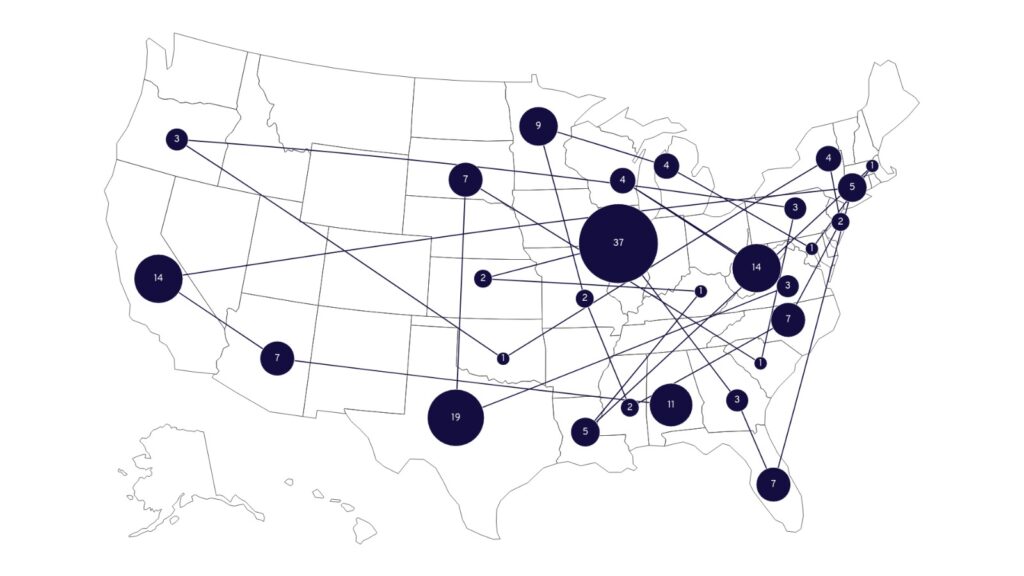How to Build a Tribe
As human beings, we all face crises and one time or another. We can differentiate ourselves by showing how we respond. Some people ignore the problems or live in denial. Others plan a strategy to help them recalibrate, rebuild, and succeed.
Through our work at Prison Professors, we strive to show justice-impacted people how to respond after an arrest or criminal prosecution. They’ve got to create a plan. The plan should address specific challenges and different stages. Ultimately, the plan should help people recalibrate so they can go on to live with meaning and relevance, and dignity.
They may accelerate the plan if they work to restore and rebuild a reputation.
We’re in the digital age, which makes it easy for people to learn about a person’s criminal record. If not appropriately addressed, that record can complicate a person’s pathway to success. Even after a person serves a prison term, collateral consequences await. We must prepare.
While it may seem like an uphill battle, a well-executed personal marketing strategy can significantly impact public perception. This strategy worked well for me. It works well for global corporations, too. Consider an example from McDonald’s.
McDonald’s is a prime example of how marketing can transform public perception. Few people would argue that McDonald’s makes the best cheeseburger they’ve ever tasted. Yet statistics show that McDonald’s sells more cheeseburgers than any other restaurant.
Why?
McDonald’s strategic marketing efforts, brand consistency, and relentless focus on success bring results that shareholders want. Shareholders want the restaurant to be profitable. They created a marketing strategy, and they executed their plan. They’ve built a tribe of followers that recognizes the golden arches—a tactic.
We can learn a lot from that example.
Building a Positive Narrative
To prepare for success after prison, we need effective strategies. Those strategies should include tactics to help others see our commitment to reconciliation.
- Step 1: We should build a record of incremental progress that supports our commitment to success.
- Step 2: We should memorialize how we’ve worked to prepare.
- Step 3: We should show how we’ve contributed to the making of a better culture or community, documenting the story of how many people we’ve helped.
Those micro steps, over time, can help us restore confidence and help others begin to view us from a different lens. Instead of judging us for the decisions that led to our criminal conviction, they begin to see us for how we responded. This effort helps us build trust, and we can translate our body of work into a better reputation.
No one will know what we’ve done if we do not document our preparations for success upon release. Without a personal action plan, we can get stuck with a bad reputation, limiting our opportunities.
When I visit prisons to present the importance of preparing for success upon release, many people tell me how hard they work. I engage members of the audience with a question about reading.
- Could you tell me how many books you’ve read since you began serving your sentence?
Typically, people say that they read a lot.
But saying “I read a lot of books” is not nearly as powerful as giving data:
- “I’ve read 92 books and I’ve written 92 book reports. Each report shows the reason I chose to read the book, what I learned, and why reading it will contribute to my success upon release.”
If a person can show all 92 reports in a central location, he has an asset—a resource. He can use that resource to validate his self-directed effort to prepare for success. People will begin to view him from a different lens. He isn’t the kind of person who talks about wanting to succeed upon release. Instead, he is the kind of person who knows how to prepare for success.
The harder a person works to memorialize his preparations for success, the more credibility and trust he builds. Those records become transformational, improving an online reputation. It’s part of a personal marketing strategy, empowering people to communicate with a broader audience.
We should work to build a tribe of advocates.
Building a Tribe: Helping Others Succeed
Many people in prison use their time to help others. They should record the efforts they’re making to build better communities. For example, if a person led a class that resulted in five people earning their GED, then it would be helpful for the person to document those efforts. We want people to work toward becoming good citizens, and we want them to show the impact they’re having on building safer communities.
This strategy will help others see them differently.
To assist community members, we’re investing in building data graphs. If a person influences five people to prepare for success, and those five people go on to influence five more people, a person’s influence grows in geometric proportions. Recording those contributions will help a person tell a more compelling story about working to reconcile with society.
We want people to be extraordinary and compelling. For that reason, we encourage participants to help others commit to this strategy of preparing for success upon release. To the extent we’re able, our nonprofit will continue producing resources to help.
Just as McDonald’s built its empire through strategic marketing and consistent messaging, we can redefine our image by showcasing positive contributions, transparency, a commitment to personal growth, and pursuing excellence.
Start building a tribe. Show your positive influences on improving your community, and use that story to open new opportunities. Personal marketing is not about erasing one’s history but embracing growth, redemption, and a determination to be a law-abiding, contributing citizen.


